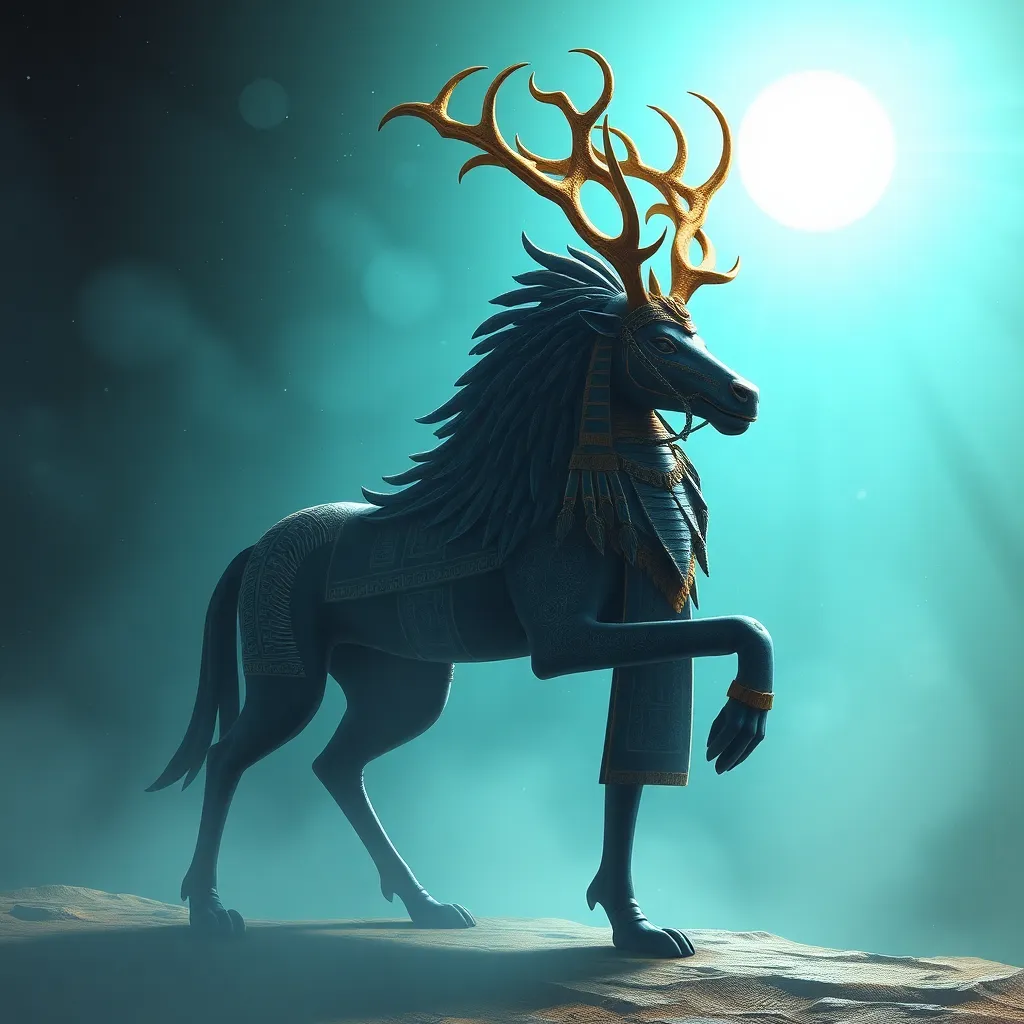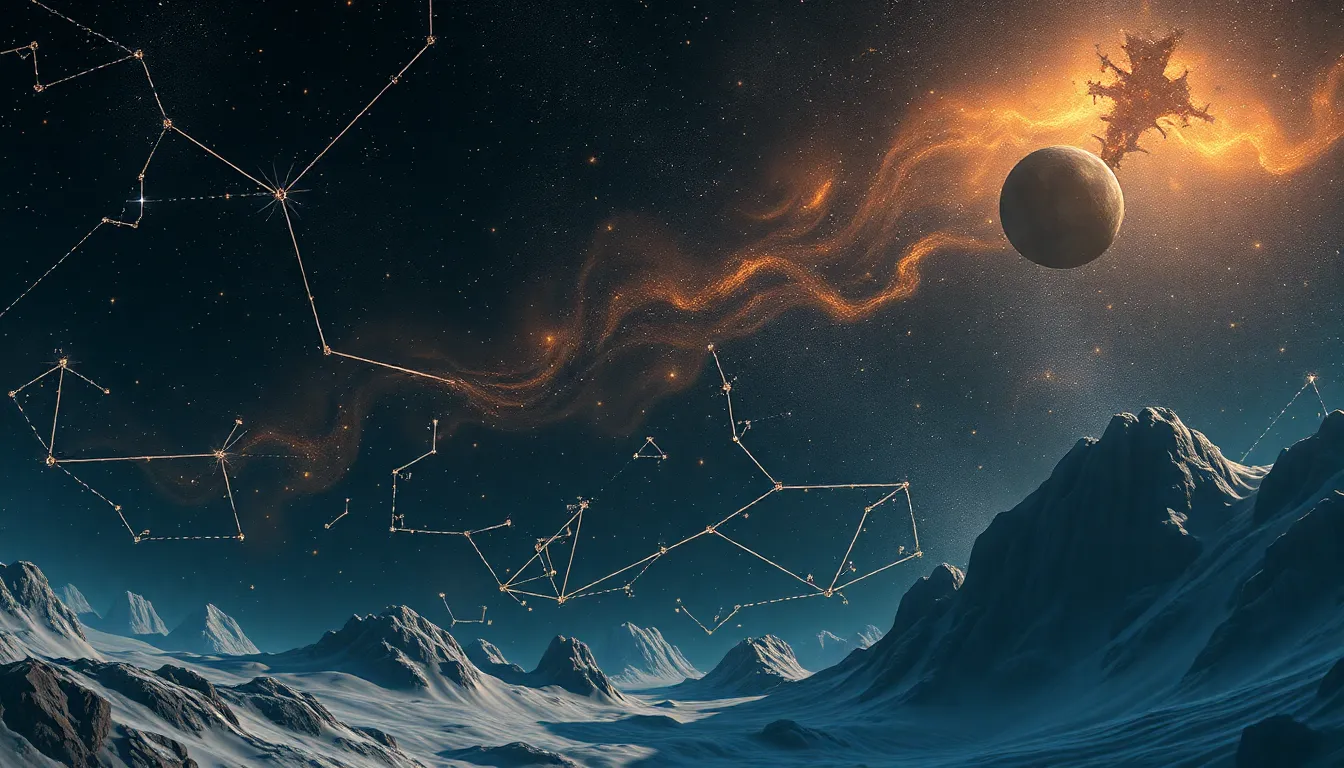Sleipnir Tales: The Egyptian Gods of the Sun and Afterlife: Ra and Osiris
I. Introduction
Egyptian mythology is one of the richest and most complex belief systems in the history of human civilization. It is filled with a multitude of gods and goddesses, each with their own distinct roles and attributes. Among these deities, Ra and Osiris stand out as two of the most significant figures in ancient Egyptian culture, embodying the dual concepts of life and afterlife.
This article aims to explore the roles that Ra and Osiris played in Egyptian mythology, their symbolic significance, and the rituals associated with their worship. By examining their stories and the cultural context in which they thrived, we can gain a deeper understanding of their importance in ancient Egyptian society.
II. The Role of the Sun in Egyptian Mythology
The sun has always held a central place in ancient Egyptian life, influencing agriculture, daily routines, and religious practices. The Egyptians revered the sun as a vital source of life, which was reflected in their calendar and agricultural cycles.
In religious practices, the sun symbolized creation, growth, and renewal. It was believed that the sun’s daily journey across the sky represented the cycle of life, death, and rebirth — a theme that resonates deeply in the mythology surrounding Ra, the supreme sun god.
Introduction to Ra as the Sun God
Ra was not only the sun god but also regarded as the king of the gods and the creator of all life. His daily journey across the sky was seen as a battle against the forces of chaos, representing the struggle between order and disorder in the universe.
III. Ra: The Supreme Sun God
A. Origins and Mythology of Ra
Ra’s origins are steeped in myth. He is often depicted as being born from the primordial waters of Nun, emerging as the first light that dispelled darkness. In various myths, Ra is described as having created himself and all other gods. His association with the sun is so profound that he is often referred to as “the light of the world.”
B. Iconography and Representations of Ra
Ra is typically depicted as a man with the head of a falcon, crowned with a sun disk encircled by a cobra. This imagery emphasizes his divine power and connection to kingship and protection.
C. Major Myths and Stories Involving Ra
- The Journey Through the Underworld: Each night, Ra is believed to travel through the underworld, battling the serpent Apep, representing chaos and darkness. His victory ensures the sun rises again each morning.
- Ra and the Creation of Humankind: In some myths, Ra creates humans from his tears or sweat, further establishing his role as a life-giver.
- Ra and the Other Gods: Ra’s relationship with other gods, such as Hathor and Sekhmet, illustrates his importance in the pantheon and highlights his role in maintaining cosmic order.
IV. Osiris: The God of the Afterlife
A. Origins and Mythology of Osiris
Osiris, another central figure in Egyptian mythology, is known as the god of the afterlife, resurrection, and fertility. He was originally a god of agriculture before his mythology evolved to encompass death and rebirth.
B. Symbolism of Osiris in Death and Resurrection
Osiris embodies the cycle of life and death, representing the promise of resurrection and eternal life. His story illustrates the belief that death is not the end but a transition to another state of existence.
C. Major Myths and Stories Involving Osiris
- The Murder of Osiris: Osiris was killed by his brother Set, who sought power. This act set off a series of events that led to his resurrection by his wife, Isis.
- The Resurrection of Osiris: Isis, through her magical abilities, resurrects Osiris, allowing him to rule the afterlife.
- The Weighing of the Heart: Osiris is depicted as the judge of the dead, weighing the hearts of the deceased against a feather to determine their fate in the afterlife.
V. The Relationship Between Ra and Osiris
A. The Balance Between Life and Death in Their Narratives
Ra and Osiris represent the duality of existence: Ra symbolizes life through the sun, while Osiris embodies the afterlife. Together, they illustrate the ancient Egyptian understanding of the cyclical nature of life and death.
B. The Role of Ra in Osiris’s Resurrection
Ra plays a crucial role in Osiris’s resurrection, highlighting the interconnectedness of their stories. It is through the power of the sun and the life it bestows that Osiris is ultimately brought back to life.
C. How Their Stories Intertwine in the Egyptian Pantheon
The narratives of Ra and Osiris are woven together within the larger tapestry of Egyptian mythology, emphasizing themes of renewal and the continuity of life. Their interactions and shared stories have cemented their statuses as fundamental figures in the beliefs of ancient Egyptians.
VI. Rituals and Worship Related to Ra and Osiris
A. Temples and Sacred Sites Dedicated to Ra and Osiris
Numerous temples were dedicated to Ra, the most significant being the Temple of Karnak in Luxor. Osiris had sacred sites as well, including the Osireion at Abydos, which served as a center for his worship.
B. Festivals and Rituals Honoring These Deities
- Wepet-Renpet: This festival marked the New Year and celebrated the rebirth associated with Ra.
- The Osiris Mysteries: A series of rituals celebrating the death and resurrection of Osiris, which played a significant role in Egyptian religious life.
C. The Impact of Their Worship on Ancient Egyptian Society
The worship of Ra and Osiris influenced various aspects of life in ancient Egypt, from agricultural practices to societal structures. Their stories provided comfort and hope to the people, reinforcing the belief in an afterlife and the cyclical nature of existence.
VII. Legacy of Ra and Osiris in Modern Culture
A. Influence on Contemporary Art and Literature
The stories of Ra and Osiris continue to inspire artists and writers, appearing in various forms of literature, paintings, and sculptures. Their themes of light, life, death, and rebirth resonate across cultures and eras.
B. Representation in Popular Media and Entertainment
In modern entertainment, Ra and Osiris have been depicted in films, television shows, and video games, often representing ancient wisdom and the mysteries of the afterlife. Such representations help to keep their legacies alive in contemporary culture.
C. Ongoing Relevance of Their Mythologies in Modern Spiritual Practices
Many modern spiritual practices draw on the teachings and symbols of Ra and Osiris, reflecting a continued interest in the ancient Egyptian understanding of life, death, and rebirth. Their stories remain relevant as individuals seek meaning in their own experiences of existence.
VIII. Conclusion
In summary, Ra and Osiris embody the fundamental human concerns of life, death, and the afterlife within Egyptian mythology. Their stories highlight the importance of the sun as a source of life and the transformative power of death and resurrection.
As we reflect on the enduring power of these deities, we recognize their significance in shaping human understanding of existence. The themes of light and darkness, life and death, continue to resonate through time, reminding us of our shared human experience and the mysteries that lie beyond.

